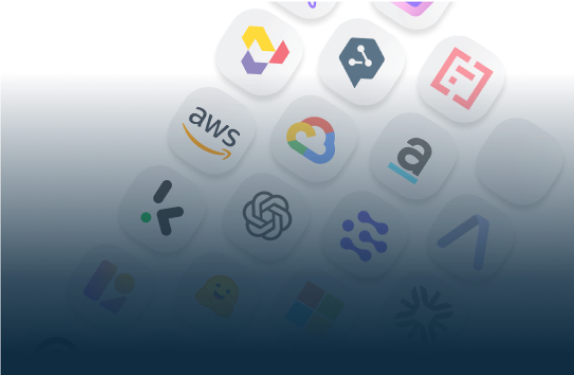
Start Your AI Journey Today
- Access 100+ AI APIs in a single platform.
- Compare and deploy AI models effortlessly.
- Pay-as-you-go with no upfront fees.
Gemini 2.5 has just launched! In the latest AI showdown, Gemini 2.5 Pro and GPT-4.5 go head-to-head, pushing the limits of advanced reasoning, conversational fluency, and more. Which one is the right fit for you?
.jpg)
Google's Gemini 2.5 Pro, released on March 25th, and OpenAI's GPT-4.5, released just a month earlier on February 27th, represent the forefront of AI development, boasting enhanced capabilities and promising significant advancements over their predecessors.
Gemini 2.5 Pro, introduced as Google's most intelligent AI model to date, emphasizes robust reasoning and coding abilities, aiming to tackle complex tasks with improved accuracy.
On the other hand, OpenAI's GPT-4.5, codenamed 'Orion,' is heralded as the company's largest model yet, designed to offer more natural conversational experiences and reduce instances of misinformation.
This article provides a comparative analysis of these two cutting-edge models, exploring their features, performance metrics, and potential applications to discern how each contributes to the AI domain.
Sources:

Gemini 2.5 Pro outperforms GPT-4.5 in reasoning (18.8% vs. 6.4%), math (92% in AIME), long-context handling (83.1% vs. 48.8%), and multilingual tasks, while GPT-4.5 leads in fact-checking (62.5% vs. 52.9%) and slightly in code generation (74.1% vs. 70.4%).
Overall, Gemini excels in advanced reasoning and complex problem-solving, whereas GPT-4.5 is more reliable for factual accuracy and coding.

Gemini 2.5 Pro ranks highly across numerous benchmarks and leaderboards for large language models and beats all other competitors by an impressive margin.
According to Google, this achievement was made possible by "combining a significantly enhanced base model with improved post-training."
The Gemini 2.5 Pro API is available on Google AI Studio, the Gemini app for Advanced subscribers, and soon on Vertex AI for enterprise users, while GPT-4.5 can be accessed via Open AI’s API.
The following examples illustrate how to interact with these models using Python
Python request example for chat with Gemini's API:
Python request example for chat with Open AI's API:
Eden AI offers a streamlined platform that grants access to both Google and Open AI models through a single API, eliminating the need for multiple keys and simplifying integration. With a diverse selection of AI models, users can easily manage and integrate custom data sources using an intuitive interface and Python SDK.
Eden AI also provides robust performance tracking and monitoring to help teams maintain peak productivity.
Its pricing structure is straightforward and cost-efficient, charging solely for actual API usage without hidden fees or subscriptions.
Eden AI’s transparent pricing is supported by a supplier-side margin, and there are no restrictions on API calls, regardless of volume.
Designed with developers in mind, Eden AI prioritizes ease of use, reliability, and scalability, enabling teams to build powerful AI solutions without unnecessary complexity.
As of now, Google has not released pricing information for Gemini 2.5 Pro. The company has stated that pricing details will be announced in the coming weeks to allow for higher rate limits and scaled production use
Sources:
GPT-4.5's cost is more on the expensive end due to its advanced capabilities and high computational demands.
Both Gemini 2.5 Pro and GPT-4.5 represent significant milestones in AI development, each excelling in different aspects of performance and application.
Gemini 2.5 Pro stands out for its superior reasoning, complex problem-solving, and multilingual capabilities, making it ideal for tasks that require deep analysis and advanced decision-making.
It outperforms GPT-4.5 in key areas like math and long-context handling, establishing itself as a powerful model for more intricate AI applications.
On the other hand, GPT-4.5 shines in its conversational abilities and factual accuracy, making it a reliable choice for content creation, contract review, and projects requiring emotional intelligence and clarity.
Both models are formidable tools, but the choice between them depends on the specific needs and tasks at hand.
Ultimately, both models have their strengths, and selecting the right one depends on the unique requirements of your project and the specific type of tasks you wish to optimize.


You can directly start building now. If you have any questions, feel free to chat with us!
Get startedContact sales